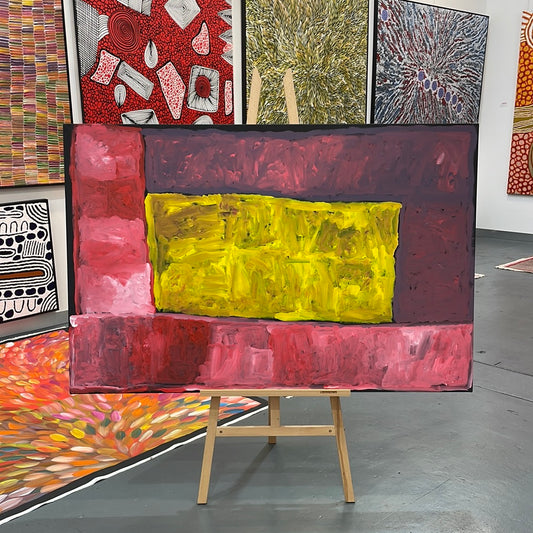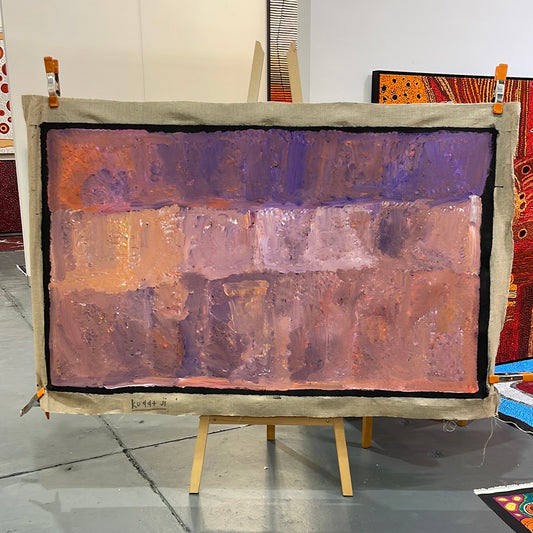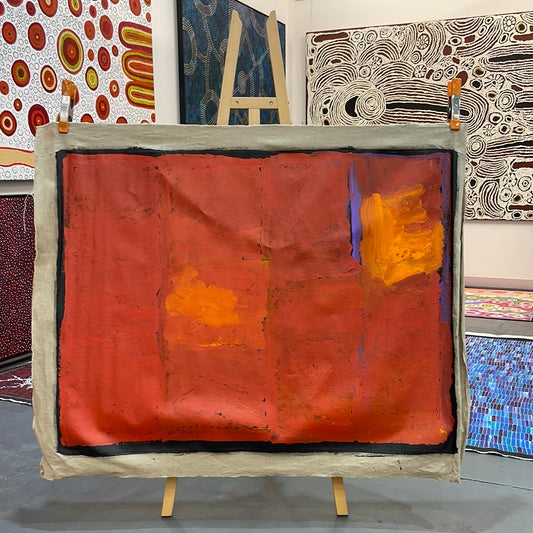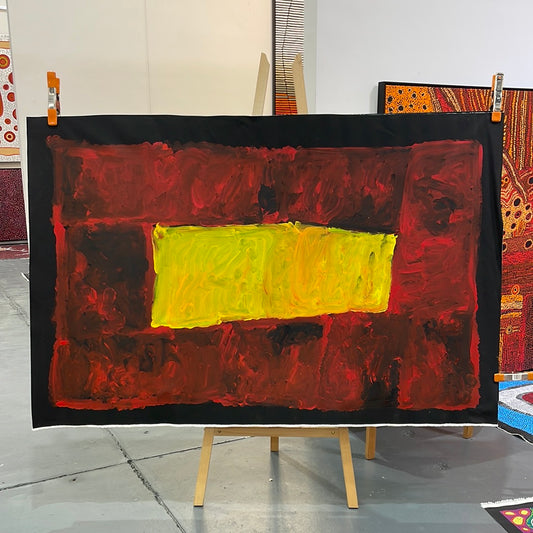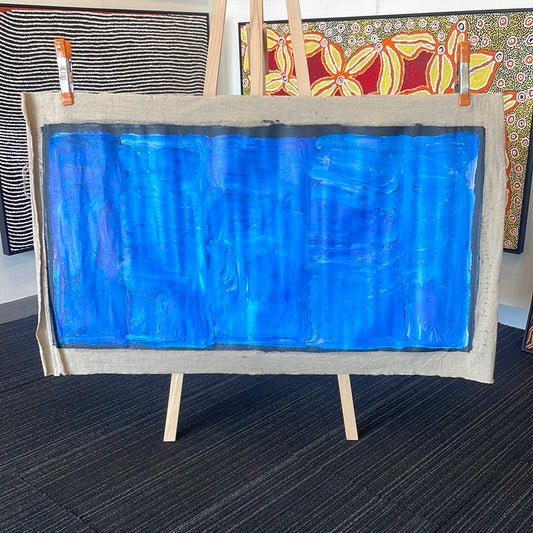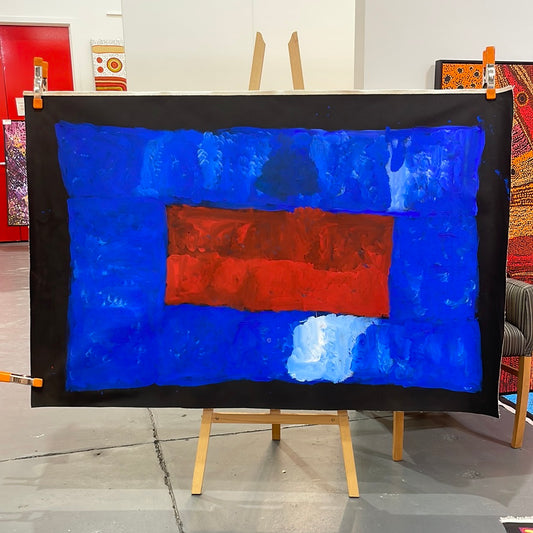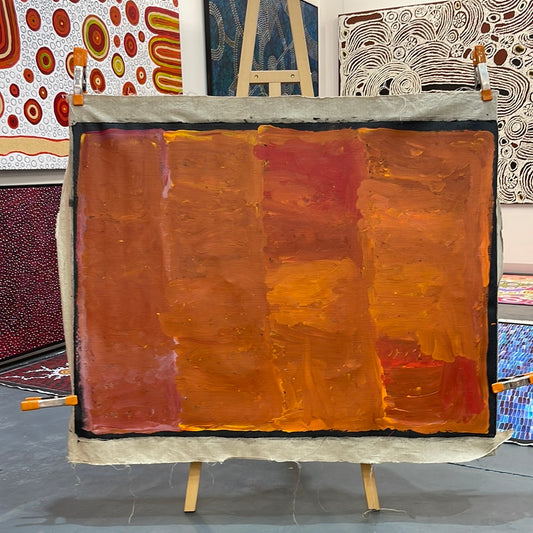Collection: Kudditji Kngwarreye
-
Kudditji Kngwarreye 1200 mm x 1500 mm
CODE : 421Vendor:Kudditji KngwarreyeRegular price $9,900.00 AUDRegular priceUnit price / per$12,000.00 AUDSale price $9,900.00 AUDSold out -
Kudditji Kngwarreye 1480 X 2000
Vendor:Kudditji KngwarreyeRegular price $17,500.00 AUDRegular priceUnit price / per -
Kudditji Kngwarreye 940 mm x 1450
CODE : 2062Vendor:Kudditji KngwarreyeRegular price $6,500.00 AUDRegular priceUnit price / per -
Kudditji Kngwarreye 900 mm x 1500 mm
CODE : 398Vendor:Kudditji KngwarreyeRegular price $6,500.00 AUDRegular priceUnit price / per -
Kudditji Kngwarreye 1450 mm x 1900 mm
CODE : 3289Vendor:Kudditji KngwarreyeRegular price $18,000.00 AUDRegular priceUnit price / per -
Kudditji Kngwarreye 440 mm x 1800 mm
CODE : 471Vendor:Kudditji KngwarreyeRegular price $5,900.00 AUDRegular priceUnit price / per$6,700.00 AUDSale price $5,900.00 AUDSale -
Kudditji Kngwarreye 900 mm x 1200 mm
CODE : 529Vendor:Kudditji KngwarreyeRegular price $5,900.00 AUDRegular priceUnit price / per -
Kudditji Kngwarreye 900 mm x 1450 mm
CODE : 2326Vendor:Kudditji KngwarreyeRegular price $6,900.00 AUDRegular priceUnit price / per -
Kudditji Kngwarreye 600 mm x 1080 mm
CODE : 429Vendor:Kudditji KngwarreyeRegular price $3,900.00 AUDRegular priceUnit price / per -
Kudditji Kngwarreye 890mm x 1480mm
CODE : 2154Vendor:Kudditji KngwarreyeRegular price $6,900.00 AUDRegular priceUnit price / per -
Kudditji Kngwarreye 900 mm x 1200 mm
CODE : 533Vendor:Kudditji KngwarreyeRegular price $5,900.00 AUDRegular priceUnit price / per -
Kudditji Kngwarreye 1430 mm x 1930 mm
CODE : 3673Vendor:Kudditji KngwarreyeRegular price $15,500.00 AUDRegular priceUnit price / per -
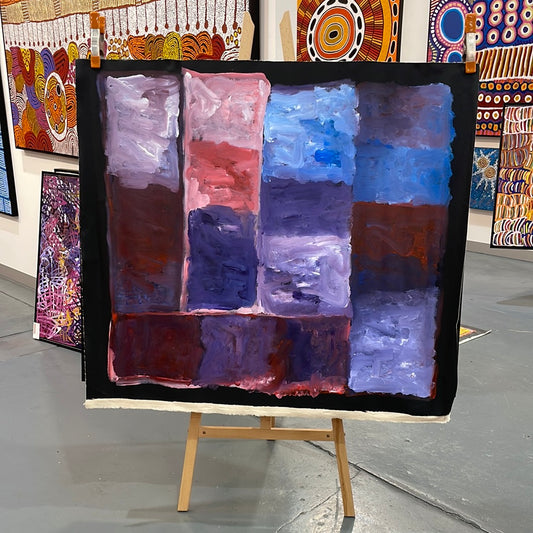 Sold out
Sold outKudditji Kngwarreye 960 mm x 1050 mm
CODE : 2136Vendor:Kudditji KngwarreyeRegular price $4,500.00 AUDRegular priceUnit price / per -
Kudditji Kngwarreye 760 mm x 1580 mm
CODE : 350Vendor:Kudditji KngwarreyeRegular price $6,200.00 AUDRegular priceUnit price / per$9,200.00 AUDSale price $6,200.00 AUDSale -
Kudditji Kngwarreye 1000 mm x 1120 mm
CODE : 470Vendor:Kudditji KngwarreyeRegular price $6,950.00 AUDRegular priceUnit price / per -
Kudditji Kngwarreye 1500 mm x 1900 mm
CODE : 2645Vendor:Kudditji KngwarreyeRegular price $15,000.00 AUDRegular priceUnit price / per
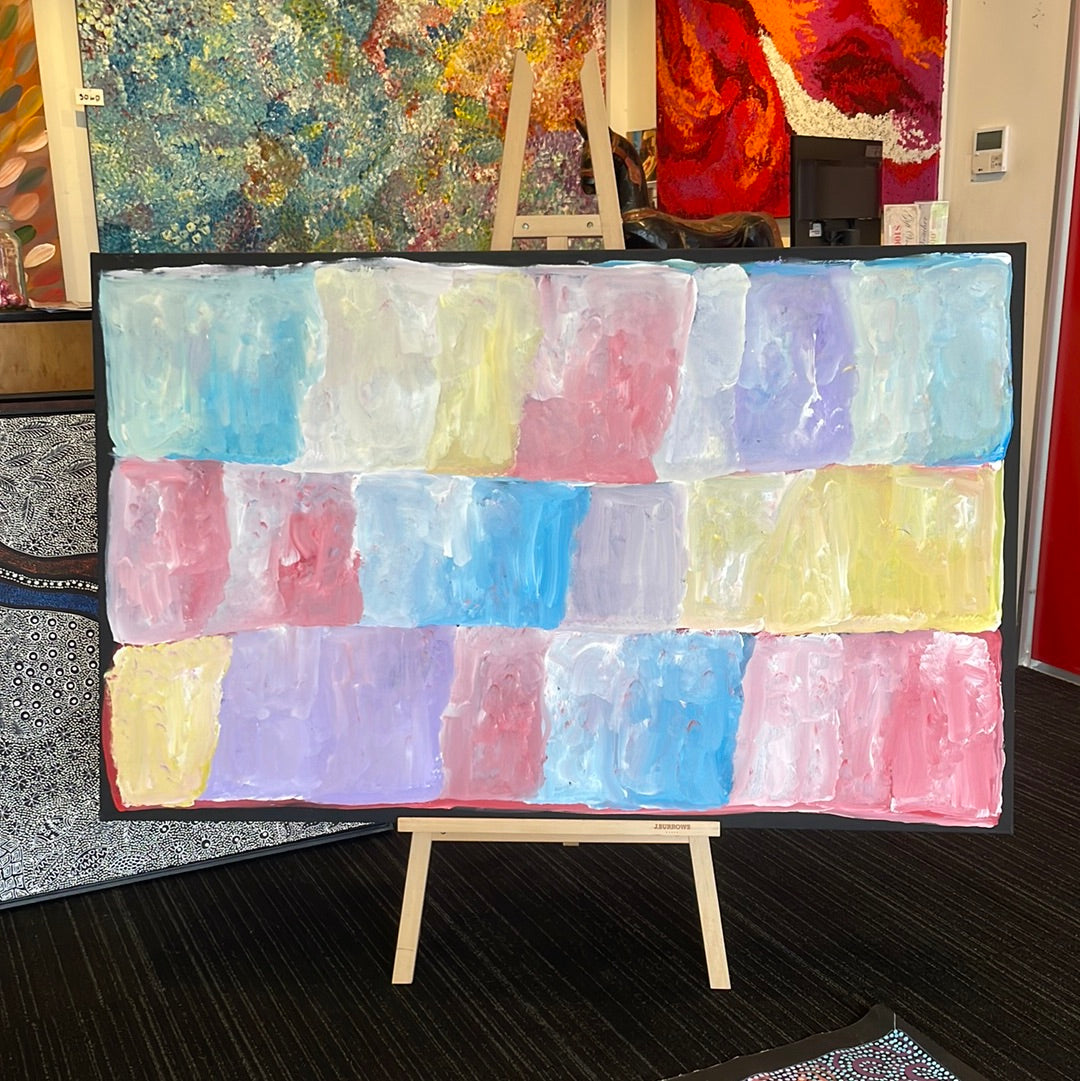
About Kudditji Kngwarreye
- Date of Birth: Circa 1938 A.D
- Place of Birth: Lallguora, Utopia Region, Northern Territory, Australia
- Language: Anmatyerre
- Style of art: Kngwarreye Art Style
- Aboriginal Art Status: Revered Elder, visionary artist
Kudditji Kngwarreye (pronounced goo-beh-chee) served as an Anmatyerre Elder and Dreaming custodian through his Ancestral role for the important land traditions within Utopia. His status as senior lawman and ceremonial leader gave him extensive cultural understanding that he applied to create paintings. His art practices brought a unique minimalistic approach to Aboriginal art, which critics recognised as the Australian equivalent of Mark Rothko's work.
Kudditji became a trailblazing artist similar to his notable half-sister artist Emily Kame Kngwarreye while establishing a collection value for his artworks. Kudditji Kngwarreye celebrates Country through his artwork using basic elements that convey deep cultural value.
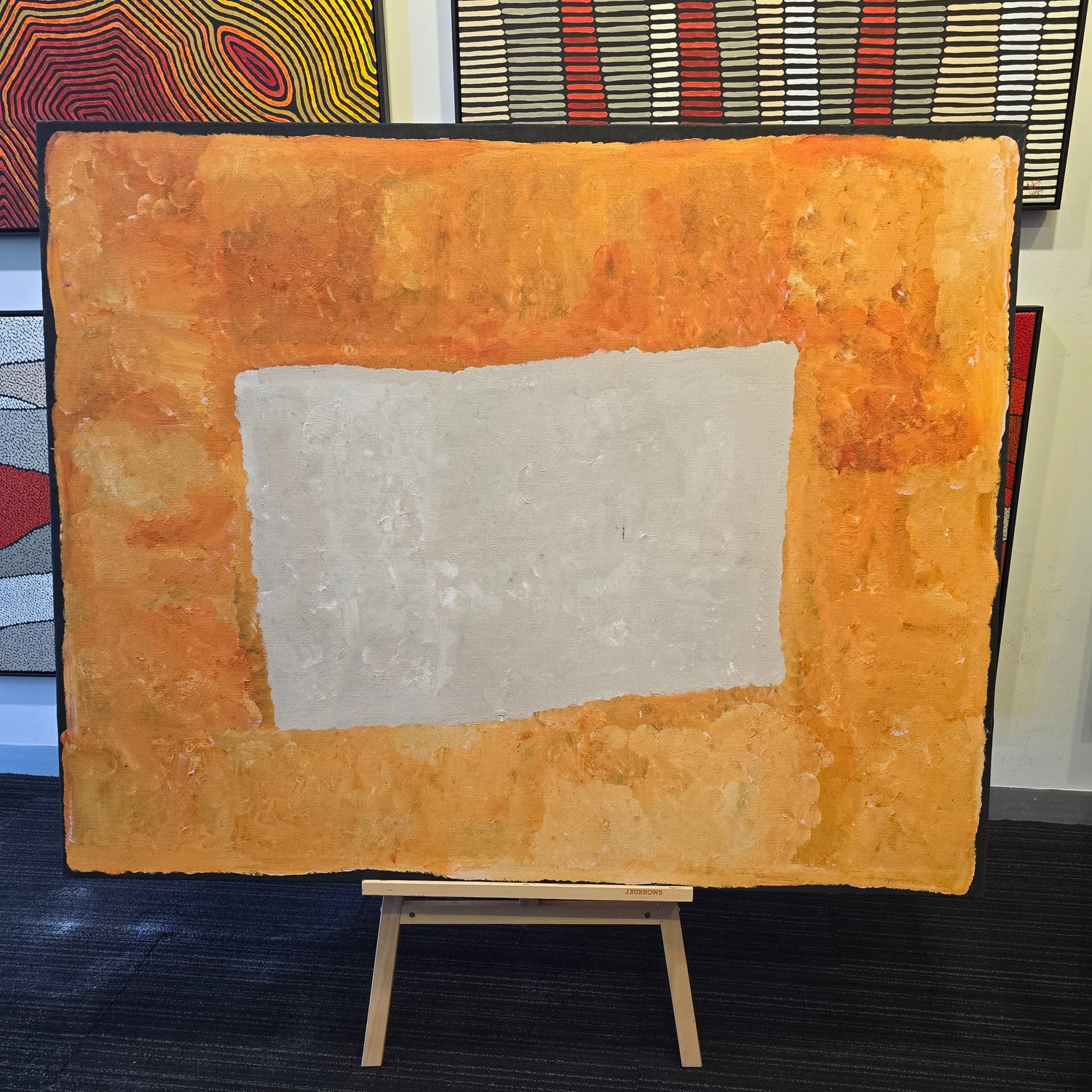
Life & Journey to Art of Kudditji
Born in 1938 in Lallguora, a remote community in the Utopia region of the Northern Territory, Australia, Kudditji Kngwarreye was a speaker of the Anmatyerre language and a respected member of the Utopia community, where he lived until his passing in 2017.
Kngwarreye lived a traditional nomadic life for decades before an encounter in the late 1970s set him on an artistic path that would dazzle audiences worldwide.
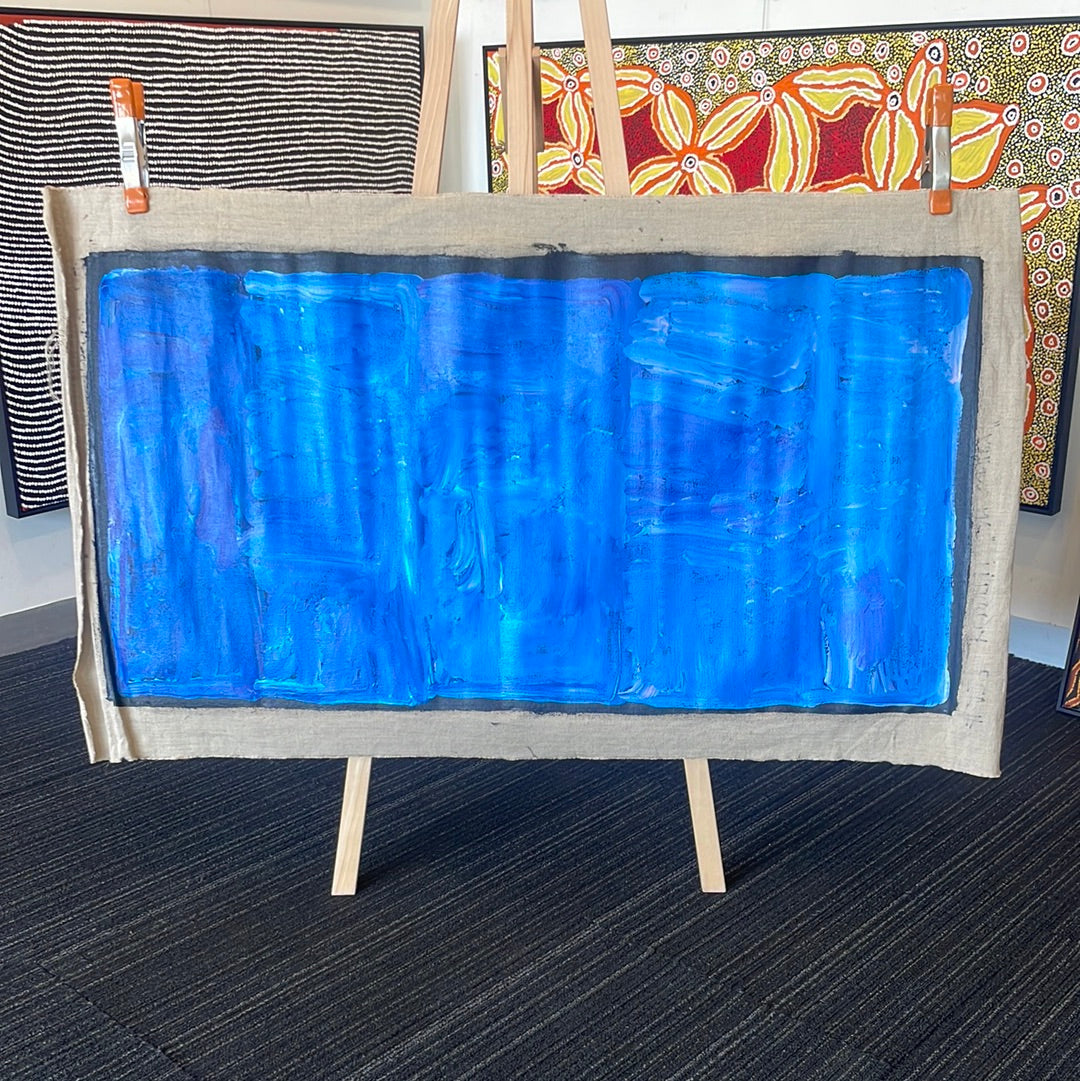
It was at the newly established Utopia arts community that Kngwarreye was first introduced to acrylic paints and canvas. While his early works featured simple designs, he soon developed his signature style of layering thousands of curved lines that ripple across the surface — an approach that inspired other artists in the region, including his daughter-in-law, Bessie Pitjara.
Kudditji Kngwarreye’s Painting Style
Kngwarreye lived a traditional nomadic life for decades before an encounter in the late 1970s set him on an artistic path that would dazzle audiences worldwide. It was at the newly established Utopia arts community that Kngwarreye was first introduced to acrylic paints and canvas. While his initial works were simple designs, Kngwarreye soon developed a unique art technique of layering thousands of curved lines that seemed to ripple across his surfaces, now known as the Kngwarreye art.
Through his abstract visual language, Kudditji turned his Dreaming knowledge into emotive paintings that avoid direct representation of Aboriginal mythology. His distinctive abstract artwork techniques generated him recognition as one of the founders of abstract Aboriginal art. Collectors worldwide now seek Kudditji Kngwarreye's art for sale because of this bold, transformative style.
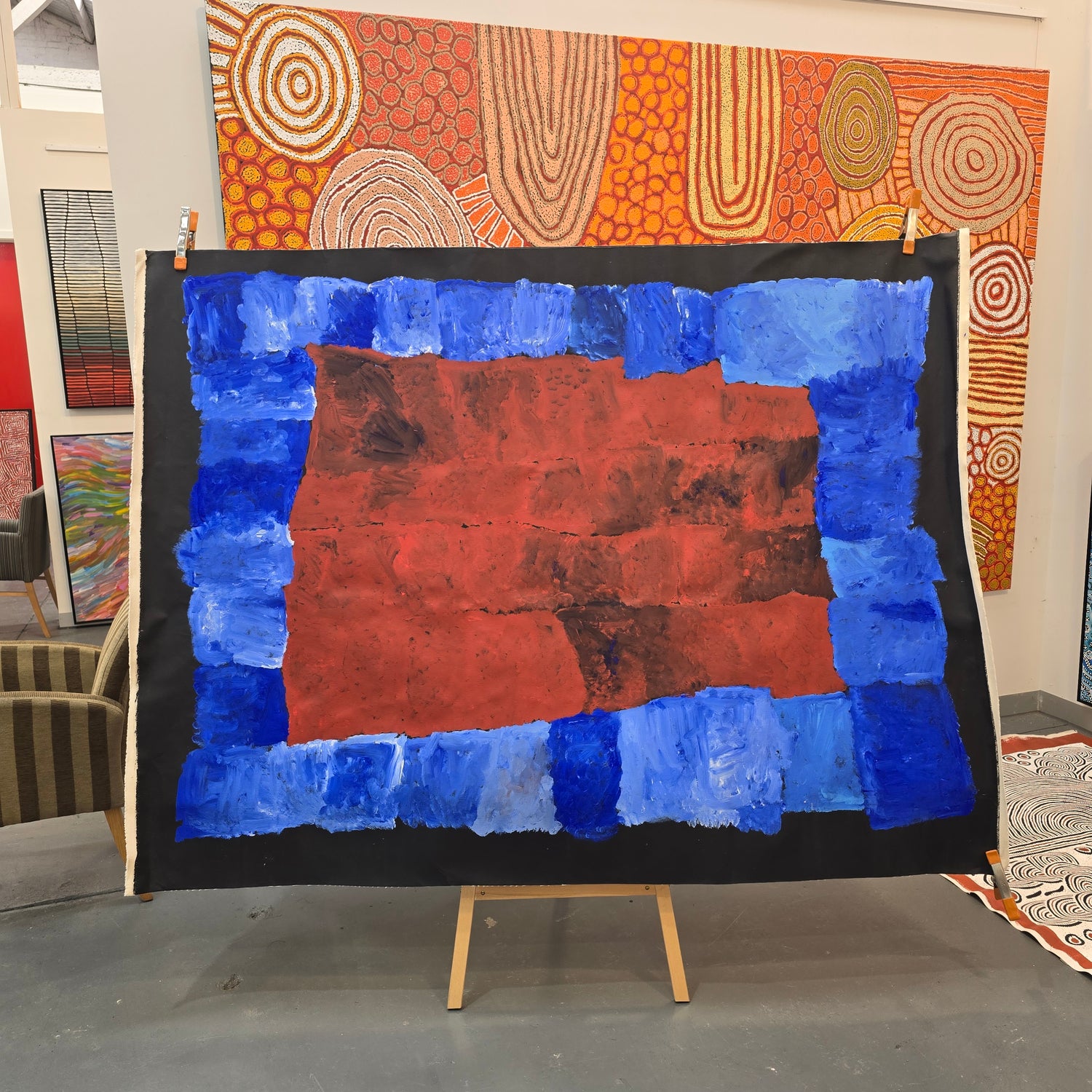
Traditional Stories and Themes of Kudditji Kngwarreye’s Artworks
Kudditji Kngwarreye's art transcended the boundaries of the Anmatyerre culture, earning him widespread acclaim and a revered reputation that extended far beyond his remote Utopia community. Some of the most renowned are:
- Untitled (Dreamtime Story) 1995 - Large-scale canvas depicting his Dreaming stories through intricate dot work
- Emu Ritual 1992 - Vibrant depiction of an emu ceremonial dance, a sacred men's ritual
- My Country 2005 - Expansive dotted landscape celebrating his connection to Utopia lands
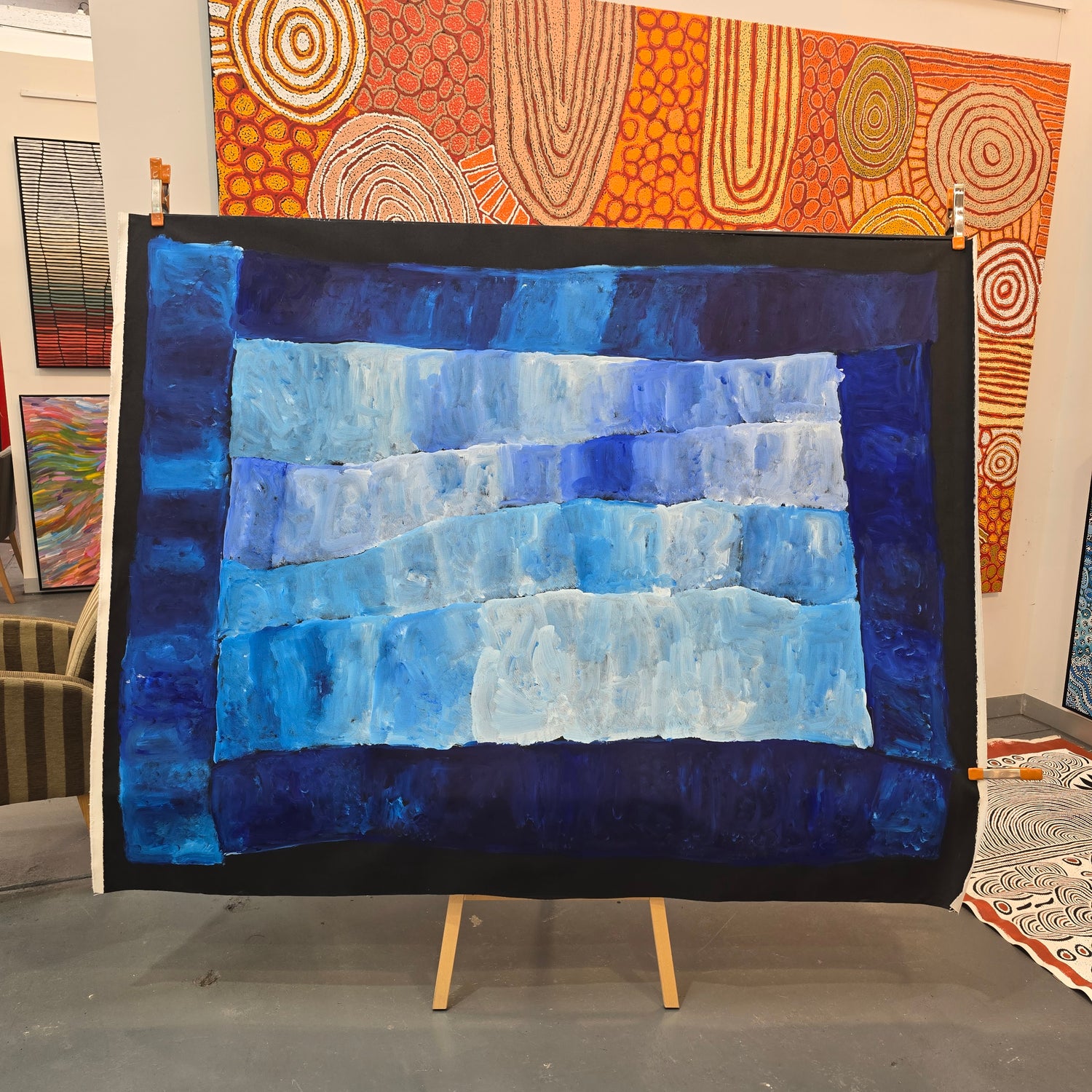
Every painting is not just a visual story, but a mapping of sacred knowledge meant to be shared carefully and respectfully. Despite his late start, Kudditji Kngwarreye secured his legacy as a trailblazer who helped elevate Aboriginal art from obscurity to the vanguard of modernity. His shimmering landscapes will forever reveal the power of hand and heart to make the eternal Dreamings sing.
The Visionary Art Style of Kudditji Kngwarreye
For those unfamiliar with Kudditji Kngwarreye, his name has become synonymous with the distinctively Australian art movement and his art, also known as the kngwarreye art style. Despite taking up painting at around age 50, Kngwarreye left an indelible mark on the global art world over his tragically short career.
Kngwarreye’s intricate, almost hypnotic patterns are streaked with vivid oranges, yellows, whites, and blacks, incorporating traditional motifs and creation stories (dreamings) from his Anmatyerre culture. Each work pulsed with rhythmic energy as if the very earth's creative forces channelled through Kngwarreye's brush.
While these canvases first appeared as pure abstractions to Western eyes, they were depictions of the artist's ancestral lands, their topographies, and sacred narratives encoded in a vibrant, almost hieroglyphic script.
Achievements & Recognition
After his breakthrough 1988 solo exhibition in Melbourne, Kngwarreye's recognition skyrocketed. In 1992 he became the first Aboriginal artist given a solo show at the Art Gallery of New South Wales. His participation in the prestigious Venice Biennale in 1997 marked a global recognition of contemporary Aboriginal art.
Kudditji painted from 1986 to 2013 when he became ill. In 2006, he was named one of the top 50 most collectible artists in Australia by Art Collector magazine. After recovering from illness, the Kate Owen Gallery presented "The Master Returns" in 2013, featuring a new body of Kudditji's powerful works, his first since overcoming his health battle.
Kudditji’s works are represented in major institutional collections like the National Gallery of Australia. He was also awarded the prestigious Red Ochre Award in 2008 for lifetime achievement in Indigenous arts.
kudditji Kngwarreye continued painting until 2015 when illness prevented him further. Tragically, he passed away in January 2017, leaving a catalog of fewer than 3,000 works. Today, they are held by major museums worldwide as masterpieces - dazzling windows into the ancient, living soul of Australia's first peoples and their profoundly spiritual connection to the land.
Despite his late start, Kudditji Kngwarreye secured his legacy as a trailblazer who helped elevate Aboriginal art from obscurity to the vanguard of modernity. His shimmering landscapes will forever reveal the power of hand and heart to make the eternal Dreamings sing.
Experience the Eternal Dreamings with Mandel: Kudditji Kngwarreye’s Art for Sale at Mandel Aboriginal Art Gallery
At Mandel Aboriginal Art Gallery, we are proud to present a curated collection of Kudditji Kngwarreye paintings for sale, showcasing some of his most powerful works. Each piece is a testament to Kudditji’s mastery of colour, abstraction, and cultural storytelling. Whether you are new to Aboriginal art or an established collector, Kngwarreye’s art offers a rare opportunity to connect with one of Australia's most important contemporary Indigenous artists. His works speak to the timeless relationship between people, place, and spirit. Don't miss this rare opportunity to immerse yourself in the aboriginal artwork that helped shape the land and its first inhabitants through several of the indigenous master's most powerful works - dazzling windows into years of living culture. Call us at (03) 9497 5111 or reach out to us to view Kngwarreye's Visionary Masterworks at the Mandel Aboriginal Art Gallery.Browse Kudditji Kngwarreye artworks now and own a piece of eternal Dreaming.



